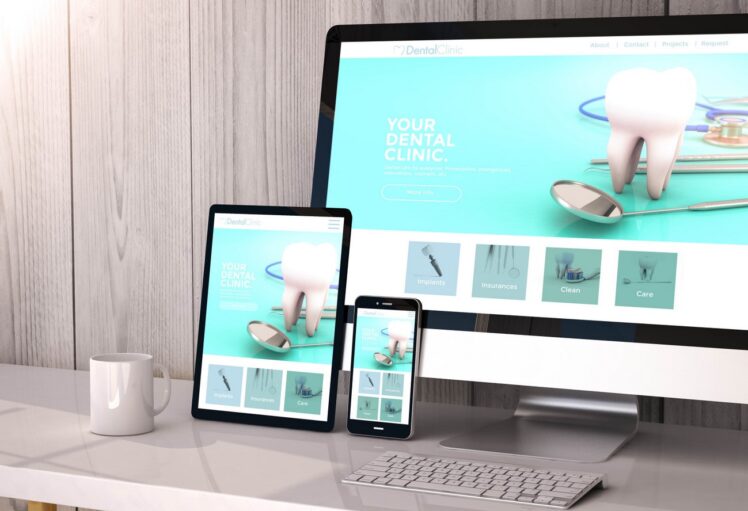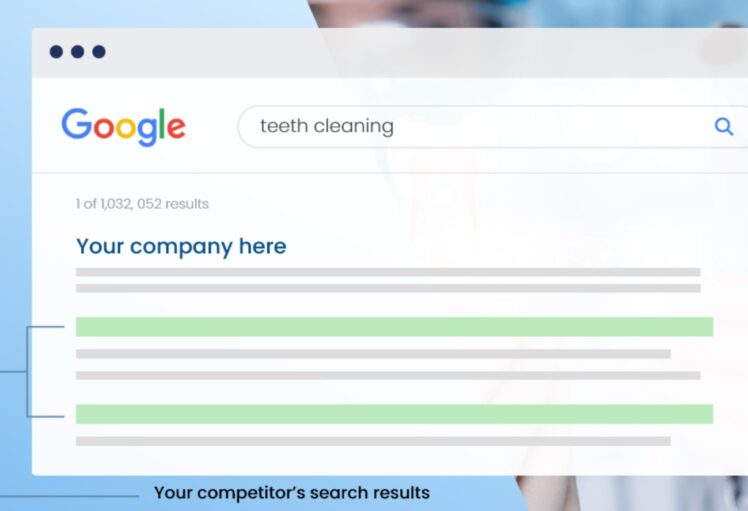Published on:
Every profession and industry must meet SEO in order to be found online. There is general knowledge about how a web shop can improve its find ability online, but how does dental SEO actually work? SEO for dentists is more local because a dental practice also wants to be found more locally. In this article, we will show you which SEO techniques you can implement to help your dental practice be found better in Google.

Contents
Dentist SEO
The first step is to have a website because without a website your dental practice cannot rank in Google. What kind of website is best? We advise you to take a WordPress website because there are many SEO plugins on it with which you can optimize your website. The WordPress website for your dental practice is best built so that the web designer can set it up properly. After that, you can maintain the website yourself and it is important to blog.
Do you have an example of a good standard seo friendly website? Yes, I will post a screenshot below of a good seo website. It is also important which domain name you register for your dental practice. In any case, make sure that the word “dentist” appears in your domain name. Otherwise, you have to do a lot of off-page SEO to give your domain name authority, while with a good domain name you can quickly build authority.
What you can see in the image is that an SEO specialist built this website, this is because their “rates” page is also directly an SEO keyword. Normally many residential dental practices post the keywords “rates” on their rates page, but this company puts “dental rates” there because they want to be found for this search term. The only thing they could have done better is when you click on the page name is “dentist rates” when it could have been better “dentist rates”. These are only minor details that do not apply if you are just starting out with the SEO of your website.

Which SEO for dentists techniques should I perform?
The first local dental SEO techniques are the on-page, so look up the search terms and create the pages for which you want to rank. After that, it is important that you ensure that you have good SEO texts and that your company is registered with Google Business. In this way, Google also knows the location of your company and they can always place you in the region for the searches.
After this it is necessary that you have off-page SEO done, this is very risky if you do not do it properly yourself. It is necessary with off-page SEO the backlinks are placed on quality websites.
Extensive experience recruiting clients for dental practices

Strengthen your image as a dental care professional with Social Media
For a dental practice, Social Media such as Facebook, Instagram and LinkedIn are very suitable for strengthening your image and identity in your catchment area. Although it definitely contributes to brand awareness, social media activity will generate relatively few real new registrations.
Social media are channels on which nothing is actively searched, in contrast to – the word says it all – search engines. Unless you are going to advertise with hard incentives such as discounts and promotions, but these are always temporary and in any case possible to a limited extent in oral care practices.
However, there is plenty to report to your followers, or in regional advertising campaigns. Think of communication about prevention, certain specialisms and brand awareness of your practice in general. Advice and tips on aftercare and preventive checks to prevent recurring complaints are of course also suitable material.
You can bet that when people are looking for a dentist and they have already seen you several times on Social Media, this influences their choice (positively).

Make your marketing measurable
If you want to serve and attract clients sustainably as a dentist, and make online marketing a part of your practice and business operations, you need to make it measurable. This makes it possible to compare your investments with the turnover and profit that can be attributed to online marketing.
On the one hand, this is technically easy to organize by setting codes that measure actions. You can think of Google Analytics codes that you put under call buttons and contact forms in the CMS system of your website. You then connect those codes with, for example, Google Ads or Google Search Console.
This will give you a reasonable idea of where' your visitors come from. For example, have they clicked on an ad and it is therefore a “paid” visitor, or have they visited the website via an organic result and it is therefore a “free” visitor.
We explicitly say “reasonable” in the previous paragraph and deliberately put “paid” and “free” in quotes. After all, it is never watertight to measure what the decisive moment was when a visitor decided to contact your practice.

Multi-channel marketing
It may well be that the visitor has already visited your website five times through various channels and then seeks contact via a paid advertisement. In this sense, new clients should always be seen as a result of multi-channel marketing. Online, offline and word-of-mouth marketing even intertwine.
In that sense, the growth of your practice, or growth in a specific therapy achieved through online marketing activities, must be seen as “multi-channel”. At the beginning of this article, we talk about integrated marketing in which all channels form a Customer Journey for the oral care recipient.
So, if an oral care recipient comes to you with a toothache, inflammation of the gums, broken teeth or just for a check-up, it is especially important to determine the journey he or she has traveled to get to your practice.

Customer loyalty with Email marketing
In the category “don’t assume that people will always return to you with mouth complaints”, it is recommended for dentists and oral care professionals, in general, to take good care of existing clients.
Of course, you do this in the first place with appropriate and pleasant oral care. But attention after the treatment is just as important. For example, send an email a week after the treatment in which you ask how the client is doing.
This can also be used when people have to undergo multiple treatments over a longer period of time. Appropriate e-mails ensure a better customer experience and follow-up of appointments. You can also provide these emails with tips and advice to promote recovery or prevent the recurrence of complaints.
All this also reduces the chance that (consciously or unconsciously) interest arises in contact with another practice, for example, do your best to be visible. You can also do it with commercial objectives – where' the starting point is of course always to help people with oral care – by setting up a mail series.

How can I keep track of my rankings?
You can track your rankings when you connect the Google search console to your website, this allows you to see which search terms rank and how many impressions/clicks you receive.
Share With Your Friends